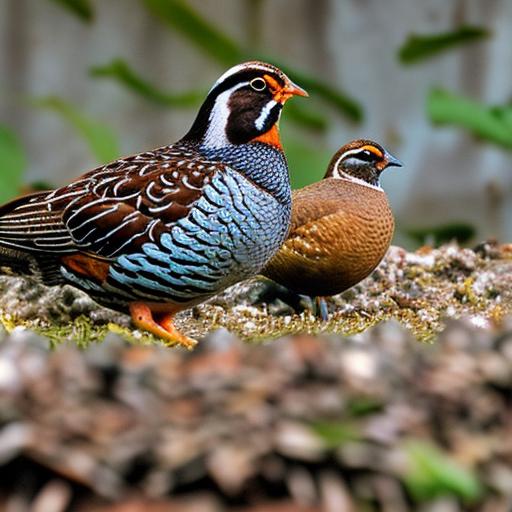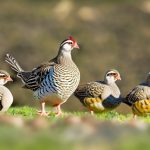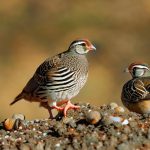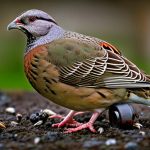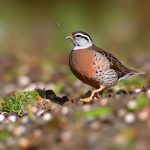Keeping mixed quail in large aviaries can be a rewarding and enjoyable experience for bird enthusiasts. Quail are small, ground-dwelling birds that are known for their social nature and beautiful plumage. They are relatively easy to care for and can thrive in a variety of environments, making them an ideal choice for mixed aviaries. By providing a spacious and enriching environment, mixed quail can exhibit their natural behaviors and interactions, creating a captivating display for bird keepers and visitors alike. In this article, we will explore the types of quail suitable for mixed aviaries, considerations for housing, feeding and nutrition, behavioral considerations, as well as health and safety concerns for mixed quail in large aviaries.
Quail are known for their social nature and beautiful plumage. They are relatively easy to care for and can thrive in a variety of environments, making them an ideal choice for mixed aviaries. By providing a spacious and enriching environment, mixed quail can exhibit their natural behaviors and interactions, creating a captivating display for bird keepers and visitors alike. In this article, we will explore the types of quail suitable for mixed aviaries, considerations for housing, feeding and nutrition, behavioral considerations, as well as health and safety concerns for mixed quail in large aviaries.
Key Takeaways
- Mixed quail in large aviaries can create a dynamic and diverse bird community
- Coturnix quail and button quail are suitable for mixed aviaries due to their peaceful nature
- Providing ample space, hiding spots, and separate feeding areas is crucial for housing mixed quail
- A balanced diet of seeds, insects, and greens is essential for the health of mixed quail
- Monitoring social dynamics and providing enrichment can help prevent aggression and stress in mixed quail
Types of Quail Suitable for Mixed Aviaries
There are several types of quail that are suitable for mixed aviaries, each with its own unique characteristics and requirements. One popular choice is the Coturnix quail, also known as Japanese quail, which is prized for its small size, colorful plumage, and prolific egg-laying abilities. Coturnix quail are social birds that thrive in mixed groups and are relatively peaceful, making them an excellent choice for mixed aviaries. Another popular option is the Bobwhite quail, which is native to North America and is known for its distinctive call and striking plumage. Bobwhite quail are ground-dwelling birds that prefer open spaces and are best suited to large aviaries with plenty of room to roam.
In addition to Coturnix and Bobwhite quail, other species such as California quail, Gambel’s quail, and Chinese painted quail can also be suitable for mixed aviaries. It is important to research the specific requirements and behaviors of each species before introducing them to a mixed aviary to ensure compatibility and minimize potential conflicts. By carefully selecting a diverse mix of quail species, bird keepers can create a visually stunning and dynamic environment that showcases the natural beauty and diversity of these fascinating birds.
Considerations for Housing Mixed Quail in Large Aviaries
When housing mixed quail in large aviaries, there are several important considerations to keep in mind to ensure the health and well-being of the birds. Firstly, the size of the aviary should be spacious enough to accommodate the natural behaviors and social interactions of the quail. A larger aviary allows the birds to establish territories, forage for food, and engage in natural behaviors such as dust bathing and nesting. Providing ample hiding spots, such as dense vegetation or shelters, can also help reduce stress and provide security for the birds.
In addition to space considerations, the design of the aviary should also take into account the specific needs of each quail species. For example, ground-dwelling species like Bobwhite quail may require open areas for foraging, while species like California quail may prefer areas with dense cover for nesting and protection. By creating a diverse range of habitats within the aviary, bird keepers can cater to the individual preferences of each quail species and promote a more natural and enriching environment.
Feeding and Nutrition for Mixed Quail in Large Aviaries
Feeding and nutrition are crucial aspects of caring for mixed quail in large aviaries. Quail are omnivorous birds that require a varied diet consisting of seeds, grains, insects, and green vegetation. In a mixed aviary setting, it is important to provide a balanced diet that meets the nutritional needs of all quail species present. This can be achieved by offering a commercial game bird feed as a base diet, supplemented with fresh greens, mealworms, and other protein sources.
In addition to providing a diverse range of foods, it is important to consider the feeding habits and preferences of each quail species when designing the feeding stations within the aviary. For example, ground-dwelling species like Bobwhite quail may prefer feeding on the ground or low-lying platforms, while species like Coturnix quail may be more inclined to feed from elevated feeders. By offering multiple feeding stations at different heights and locations within the aviary, bird keepers can ensure that all quail species have access to food without competition or aggression.
Behavioral Considerations for Mixed Quail in Large Aviaries
Understanding the natural behaviors and social dynamics of mixed quail is essential for creating a harmonious environment within large aviaries. Quail are social birds that form strong pair bonds and group hierarchies within their flocks. When introducing multiple quail species to a mixed aviary, it is important to observe their interactions closely and monitor for any signs of aggression or territorial disputes.
Providing ample space, hiding spots, and visual barriers within the aviary can help reduce potential conflicts and provide opportunities for birds to establish territories and retreat from aggressive encounters. Additionally, offering multiple nesting sites and materials can help minimize competition for breeding resources and promote successful reproduction within the mixed quail population.
Health and Safety Concerns for Mixed Quail in Large Aviaries
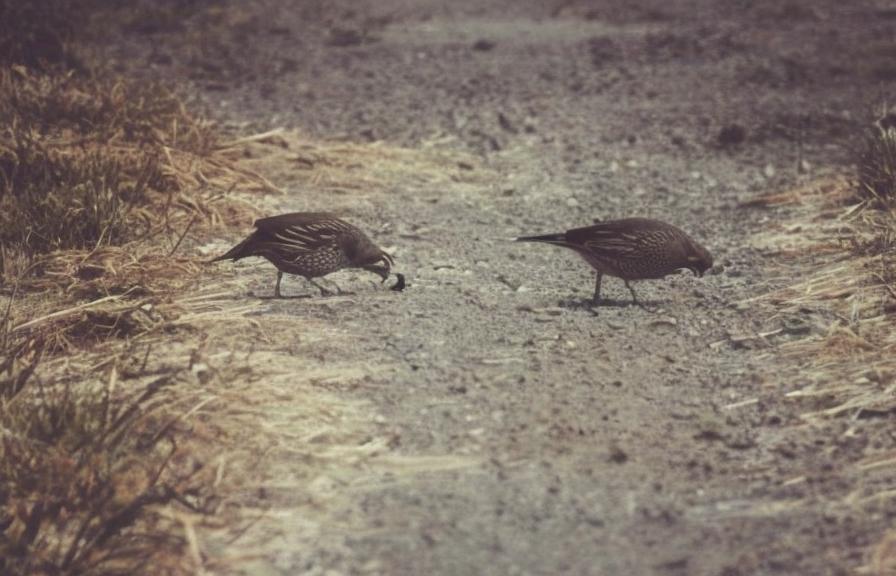
Maintaining the health and safety of mixed quail in large aviaries requires regular monitoring, preventative measures, and prompt intervention when necessary. Common health concerns for quail include respiratory infections, parasites, and nutritional deficiencies. To minimize the risk of disease transmission within a mixed aviary, it is important to quarantine new birds before introducing them to the existing population and practice good hygiene and sanitation protocols.
In addition to health concerns, safety considerations such as predator protection should also be taken into account when housing mixed quail in large aviaries. Depending on the local wildlife and environmental factors, it may be necessary to implement measures such as secure fencing, predator-proof shelters, and regular patrols to deter potential threats to the quail population.
Conclusion and Final Thoughts on Keeping Mixed Quail in Large Aviaries
In conclusion, keeping mixed quail in large aviaries can be a fulfilling and enriching experience for bird enthusiasts. By carefully selecting compatible quail species, providing spacious and enriching environments, offering a balanced diet, understanding their natural behaviors, and prioritizing health and safety measures, bird keepers can create a captivating display of diverse quail populations within a mixed aviary setting. With proper care and attention to their specific needs, mixed quail can thrive and exhibit their natural behaviors while providing endless enjoyment for bird keepers and visitors alike.
If you’re considering keeping mixed quail in a large aviary, you may also be interested in creating a suitable environment for your chickens. Check out this informative article on garden chicken coop to learn about designing a comfortable and functional space for your feathered friends. Just like with quail, providing the right housing and environment is crucial for the well-being of your chickens.
FAQs
Can I keep mixed quail in a large aviary?
Yes, you can keep mixed quail in a large aviary as long as you provide enough space, shelter, and appropriate food and water for each species.
What species of quail can be kept together in a mixed aviary?
It is generally recommended to keep similar-sized and non-aggressive species of quail together in a mixed aviary. Some compatible species include Japanese quail, Bobwhite quail, and California quail.
What should I consider when setting up a mixed quail aviary?
When setting up a mixed quail aviary, it is important to provide enough space for each species, multiple shelters and hiding spots, and separate feeding and watering stations to prevent competition and aggression.
What are the potential challenges of keeping mixed quail in a large aviary?
Some potential challenges of keeping mixed quail in a large aviary include aggression between different species, potential for hybridization, and competition for resources such as food, water, and nesting sites.
How can I prevent aggression and competition in a mixed quail aviary?
To prevent aggression and competition in a mixed quail aviary, provide ample space and resources, monitor the birds for signs of stress or aggression, and be prepared to separate or rehome any individuals that are causing issues.
Meet Walter, the feathered-friend fanatic of Florida! Nestled in the sunshine state, Walter struts through life with his feathered companions, clucking his way to happiness. With a coop that’s fancier than a five-star hotel, he’s the Don Juan of the chicken world. When he’s not teaching his hens to do the cha-cha, you’ll find him in a heated debate with his prized rooster, Sir Clucks-a-Lot. Walter’s poultry passion is no yolk; he’s the sunny-side-up guy you never knew you needed in your flock of friends!

